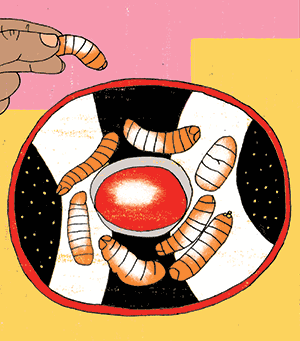
At a time when Zimbabwe, my homeland, is going through a difficult transition, I am taking time to think about the things that I love about it, and what you may enjoy too. In 2017, longtime dictator Robert Mugabe was ousted in a coup. Zimbabweans and the world thought that our country had hit a reset button. This was not the case. In the just-ended elections, I was missed by a bullet by sheer luck. After everything had calmed down, I looked through a 10th-floor window of the hotel in which I was hiding and saw street vendors pushing their heavy carts packed with fresh organic fruit. In that moment, I realized that Zimbabwe is worth fighting for because it is a country of kind, resilient and creative people. It is also a country of rich culture and extraordinary food.
City Fruit
During the rainy summer season the baked earth has the most delicious smell. As children we would hold our noses very close to the earth to take in the aroma. December brings all kinds of tropical fruit. My favorite pastime is driving around the country and negotiating with city fruit vendors for cheaper mangoes and custard apples. I have not seen custard apples anywhere else in my travels. This tiny fruit is packed with unbelievable goodness—creamy with just the right amount of sweetness. One must be careful, though, not to eat the skin, which is quite bitter.
The price of fruit varies a lot based on location. A tin of fruit is usually less than $2 U.S. in the inner city and about $5 U.S. in the low-density affluent neighborhoods. Prices correlate with the type of service one gets.
Interestingly, fruit vending in upscale markets is a male-dominated business, while street hawking in the inner city is female-dominated. These differences play out in other sectors, where men are paid more for doing the same work as women: poverty in most developing countries is gendered.
